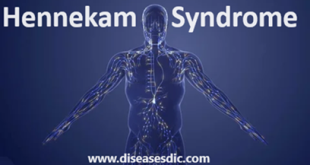What is Haemophilus influenzae?
Haemophilus influenzae or H. influenzae, represents a group of bacteria that may cause different types of infections in infants and children. H. influenzae most commonly causes ear, eye, or sinus infections, and pneumonia. A more serious strain of the bacteria called H. influenzae type b has been nearly abolished in the United States due to the development of an effective vaccine, which has been available since 1988.
The more serious strain was responsible for causing many cases of meningitis (infection of the membranes that surround the brain) and a life-threatening infection called epiglottitis (infection of the area of the throat that covers and protects the voice box and trachea during swallowing). Both meningitis and epiglottitis can be caused by other bacteria, however. In rare cases, children may still develop H. influenzae type b infections. This can occur in a child who has not completed his or her series of immunizations or in older children who did not receive the vaccine as an infant.
Types of Haemophilus Influenzae Infections
Doctors consider some H. influenzae infections “invasive.” Invasive disease happens when the bacteria invade parts of the body that are normally free from germs. For example, H. influenzae can invade the fluid around the spine and brain, causing meningitis, or bloodstream, causing bacteremia. Invasive disease is usually serious, requiring treatment in a hospital, and can sometimes result in death.
The most common types of invasive disease caused by H. influenzae are:
- Pneumonia (lung infection)
- Bloodstream infection
- Meningitis (swelling of the lining of the brain and spinal cord)
- Epiglotittis (swelling in the throat)
- Cellulitis (skin infection)
- Infectious arthritis (inflammation of the joint)
- influenzaecan also be a common cause of ear infections in children and bronchitis in adults.
Pathophysiology
The nomenclature (Haemophilus is Greek for “blood loving”) acknowledges the fact that H influenzae requires 2 erythrocyte factors for growth: X (hemin) and V (nicotinamide-adenine-dinucleotide). These factors are released following lysis of red blood cells, thereby allowing growth of this fastidious organism on chocolate agar. H influenzae consists of 8 biotypes; biotype 3 (Haemophilus aegyptius) is associated with Brazilian purpuric fever, and biotype 4 is a neonatal, maternal, and genital pathogen. Humans are the only natural hosts. NTHi strains are a common resident of the nasopharyngeal mucosa and, in some instances, of the conjunctivae and genital tract.
Transmission is by direct contact or by inhalation of respiratory tract droplets. Nasopharyngeal colonization of encapsulated H influenzae is uncommon, occurring in 2-5% of children in the prevaccine era and even less after widespread vaccination. The incubation period is not known. A larger bacterial load or the presence of a concomitant viral infection can potentiate the infection. The colonizing bacteria invade the mucosa and enter the bloodstream. The presence of antibodies, complements, and phagocytes determines the clearance of the bacteremia. The antiphagocytic nature of the Hib capsule and the absence of the anticapsular antibody lead to increasing bacterial proliferation. When the bacterial concentration exceeds a critical level, it can disseminate to various sites, including meninges, subcutaneous tissue, joints, pleura, pericardia, and lungs.
What causes Haemophilus influenzae?
The H. influenzae bacteria live in the upper respiratory tract and are usually transmitted by close contact with an infected individual. Droplets in the air from a sneeze, cough, or close conversation can be inhaled and may also cause infection.
What are the symptoms of Haemophilus influenzae?
Haemophilus influenzae symptoms in babies and children depend on the specific disease that it causes.
Ear infection (otitis media)
Symptoms may include:
- Pain
- Loss of appetite
- Irritability
- Poor sleep
- Fever
- Drainage
- Difficulty hearing
Bronchitis
Symptoms may include:
- A frequent, mucus-producing cough
- Lack of energy
- Wheezing
- Fever
- Shortness of breath
Cellulitis
Symptoms may include:
- Pain
- Tenderness
- Swelling
- Warmth
- Discoloration
- Blisters
- Fever and chills
- Fatigue
Epiglottitis
Symptoms may include:
- Severe sore throat
- Fever
- Raspy breathing called stridor
- Difficulty swallowing
- Drooling
- Difficulty breathing
Pneumonia
Symptoms may include:
- Fever and chills
- Cough
- Shortness of breath
- Difficulty breathing
- Sweating
- Chest pain
- Headache
- Muscle pain
- Fatigue.
Meningitis
Symptoms may include:
- Fever
- Headache
- Stiff neck
- Fatigue
- Decreased appetite
- Nausea and vomiting
- Irritability
- Confusion
- Seizures
Bloodstream infection (septicemia)
Symptoms may include:
- Fever and chills
- Abdominal pain
- Nausea and vomiting
- Diarrhea
- Anxiety or confusion
- Fatigue
- Shortness of breath
- Difficulty breathing
Septic arthritis
Symptoms may include:
- Fever
- Joint pain
- Tenderness
- Swelling
- Warmth
- Decreased range of motion
Complications of Haemophilus influenzae infection
If your child is not immunized and contracts Hib, they could develop:
Meningitis – an infection of the membrane covering the brain (signs include fever, stiff neck, drowsiness, irritability and refusal of food)
Epiglottitis – inflammation of the flap at the top of the windpipe (epiglottis), which can block a child’s breathing (signs include severe breathing difficulties, fever, restlessness and irritability)
Pneumonia – lung inflammation (symptoms include fever, cough, chest pains and breathing problems, such as shortness of breath)
Septic arthritis – joint infection (symptoms include joint pain, swelling and reduced mobility of the joint)
Cellulitis – infection of the tissue under the skin, usually on the face.
These complications can develop quickly and, if left untreated, your child could die in a short period of time.
Diagnosis of Haemophilus influenzae Infections
- Culture of a sample of blood or other body fluids
- Sometimes examination of a sample of cerebrospinal fluid (obtained by spinal tap)
- Chest or neck x-ray
To diagnose the infection, doctors take a sample of blood, pus, or other body fluids and send it to a laboratory to grow (culture) the bacteria. If people have symptoms of meningitis, doctors do a spinal tap (lumbar puncture) to obtain a sample of the fluid that surrounds the brain and spinal cord (cerebrospinal fluid). Identifying the bacteria in a sample confirms the diagnosis.
After the bacteria are identified, they may be tested to see which antibiotics are effective (a process called susceptibility testing).
Treatment of Haemophilus influenzae
People diagnosed with H. influenzae disease take antibiotics to treat the infection. Depending on how serious the infection is, people with H. influenzae disease may need care in a hospital. Other treatments may include:
- Breathing support
- Medication to treat low blood pressure
- Wound care for parts of the body with damaged skin
When H. influenzae cause milder infections, like bronchitis or ear infections, doctors may give antibiotics to prevent complications.
Prevention of Haemophilus Influenzae Infections
Hib vaccination
Hib conjugate vaccines are available for children ≥ 2 months of age and have reduced invasive infections (eg, meningitis, epiglottitis, bacteremia) by 99%. A primary series is given at age 2, 4, and 6 months or at age 2 and 4 months, depending on the vaccine product. A booster at age 12 to 15 months is indicated.
Contacts within the household may have asymptomatic H. influenzae carriage. Unimmunized or incompletely immunized household contacts <4 years of age are at risk of illness and should receive a dose of vaccine. In addition, all household members (except pregnant women) should receive prophylaxis with oral rifampin 600 mg (20 mg/kg for children ≥ 1 month;10 mg/kg for children <1 month) once a day for 4 days.
Nursery or day care contacts should receive prophylaxis if ≥ 2 cases of invasive disease occurred in 60 days. The benefit of prophylaxis if only one case occurred has not been established.
 Diseases Treatments Dictionary This is complete solution to read all diseases treatments Which covers Prevention, Causes, Symptoms, Medical Terms, Drugs, Prescription, Natural Remedies with cures and Treatments. Most of the common diseases were listed in names, split with categories.
Diseases Treatments Dictionary This is complete solution to read all diseases treatments Which covers Prevention, Causes, Symptoms, Medical Terms, Drugs, Prescription, Natural Remedies with cures and Treatments. Most of the common diseases were listed in names, split with categories.







